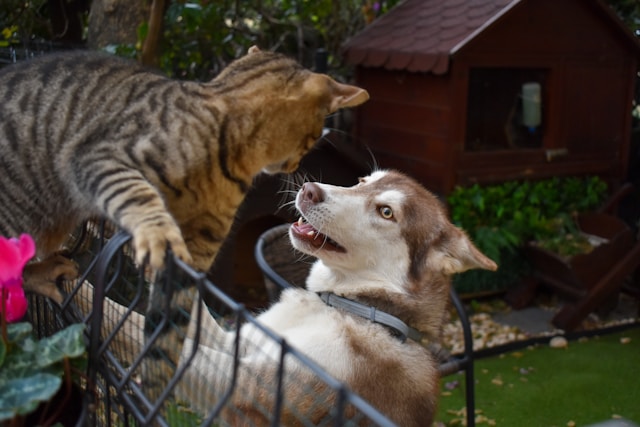Aggressive behavior in pets can be stressful, confusing, and even dangerous for owners and other animals. Whether it’s a dog growling at strangers, a cat scratching unexpectedly, or another pet displaying territorial aggression, it’s important to understand that aggression usually has an underlying cause. The good news is that with patience, proper training, and in some cases professional guidance, many pets can overcome aggression and live happily with their families.
In this guide, we’ll explore the common causes of pet aggression, the types of aggressive behavior, and practical strategies for managing and preventing it.
Common Causes of Aggression in Pets
Pets rarely act aggressively without a reason. Understanding the root cause is the first step toward addressing the problem.
-
Fear or anxiety: Many dogs and cats show aggression when they feel threatened. Fear-based aggression often happens during unfamiliar situations, loud noises, or when meeting new people or animals.
-
Territorial or protective instincts: Pets can become defensive when they believe their home, family, or territory is being invaded.
-
Pain or illness: A pet in pain due to injury, arthritis, or illness may lash out when touched or handled. Always rule out medical issues first.
-
Poor socialization or past trauma: Pets that weren’t exposed to different people, environments, or animals early in life may struggle to cope with new situations. Rescue pets may carry trauma from past experiences.
-
Resource guarding: Some pets show aggression when protecting food, toys, or resting spots.
Types of Aggressive Behavior in Pets
Aggression can look different depending on the situation:
-
Fear-based aggression: Triggered by stress or fear, often seen when a pet feels cornered.
-
Territorial aggression: Defending home or yard from intruders.
-
Possessive aggression: Guarding food, toys, or even their owners.
-
Redirected aggression: When a pet lashes out at someone nearby because they’re frustrated or overstimulated by another target.
Recognizing these patterns can help you better manage your pet’s reactions.
How to Safely Handle Aggressive Behavior
If your pet shows aggression, your first priority is safety for yourself, your pet, and others. Here are some important steps:
-
Stay calm: Yelling or punishing your pet can worsen aggression. Instead, keep a steady voice and body language.
-
Recognize warning signs: Growling, flattened ears, stiff posture, or hissing are signals your pet is uncomfortable. Step back before it escalates.
-
Remove triggers: If you know certain situations cause aggression, reduce exposure until you can work on training.
-
Positive reinforcement: Reward calm and non-aggressive behavior with treats, praise, or play. Avoid punishment-based methods, which often increase fear and aggression.
-
Provide safe spaces: Give your pet a quiet area to retreat when overwhelmed. This is especially helpful for cats and anxious dogs.
Training and Behavior Modification Tips
Training is one of the most effective ways to manage pet aggression. Some proven techniques include:
-
Desensitization and counter-conditioning: Slowly introduce your pet to triggers in a controlled way, rewarding calm behavior to change their emotional response.
-
Socialization: Expose pets gradually to new people, animals, and environments to build confidence.
-
Structured routines: Consistent feeding, walking, and play schedules reduce stress and unpredictability.
-
Reward calm behavior: Always reinforce positive behavior, no matter how small the progress.
For dogs, professional obedience training or pet aggression training classes may be especially helpful. Cats often respond well to patience, enrichment activities, and environmental adjustments.
When to Seek Professional Help
Sometimes aggressive behavior in pets requires outside help. Consider professional support if:
-
Aggression is escalating despite your efforts.
-
Your pet has caused injury to you, other people, or animals.
-
Aggression occurs unpredictably or frequently.
A veterinarian should be your first stop to rule out medical issues. If the cause isn’t health-related, certified trainers or animal behaviorists can design a customized behavior modification plan.
Preventing Aggression in Pets
Prevention is easier than correction. Here are a few ways to lower the risk of aggression:
-
Start socialization and training early, especially for puppies and kittens.
-
Provide regular exercise and mental stimulation to reduce frustration and boredom.
-
Avoid harsh punishments, which can create fear and anxiety.
-
Ensure pets have a stress-free, comfortable living environment.
-
Monitor play and interactions with children or other animals to keep things positive.
Conclusion
Dealing with aggressive behavior in pets requires patience, empathy, and consistency. By identifying the root cause, handling situations calmly, and using positive reinforcement, most pet owners can help their dogs, cats, or other pets feel more secure and less defensive.

